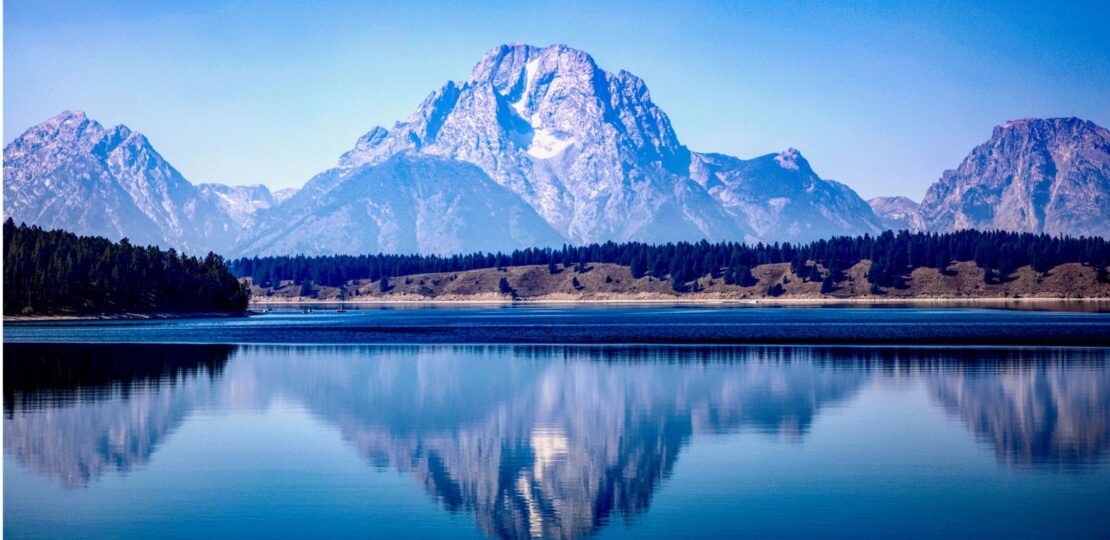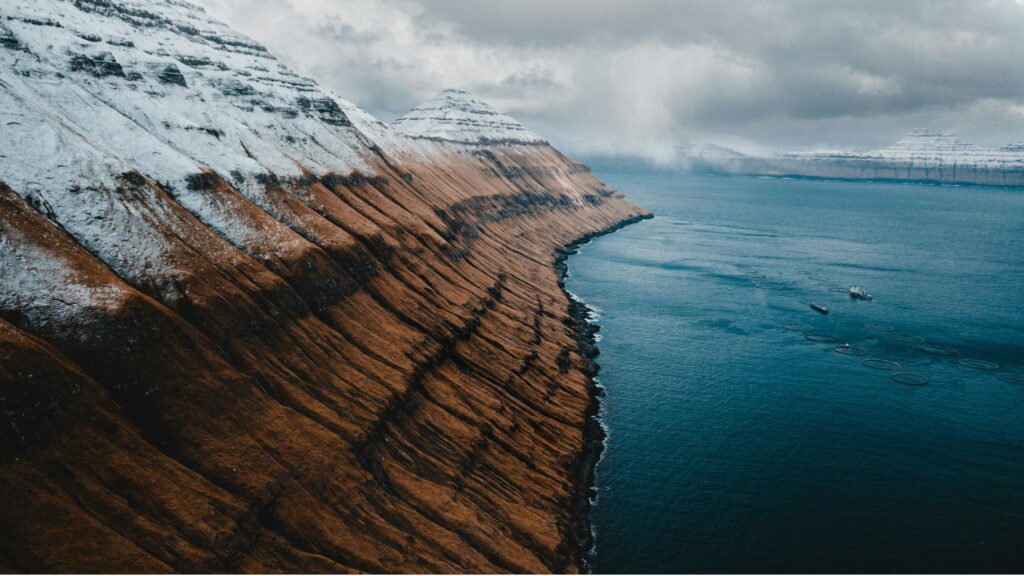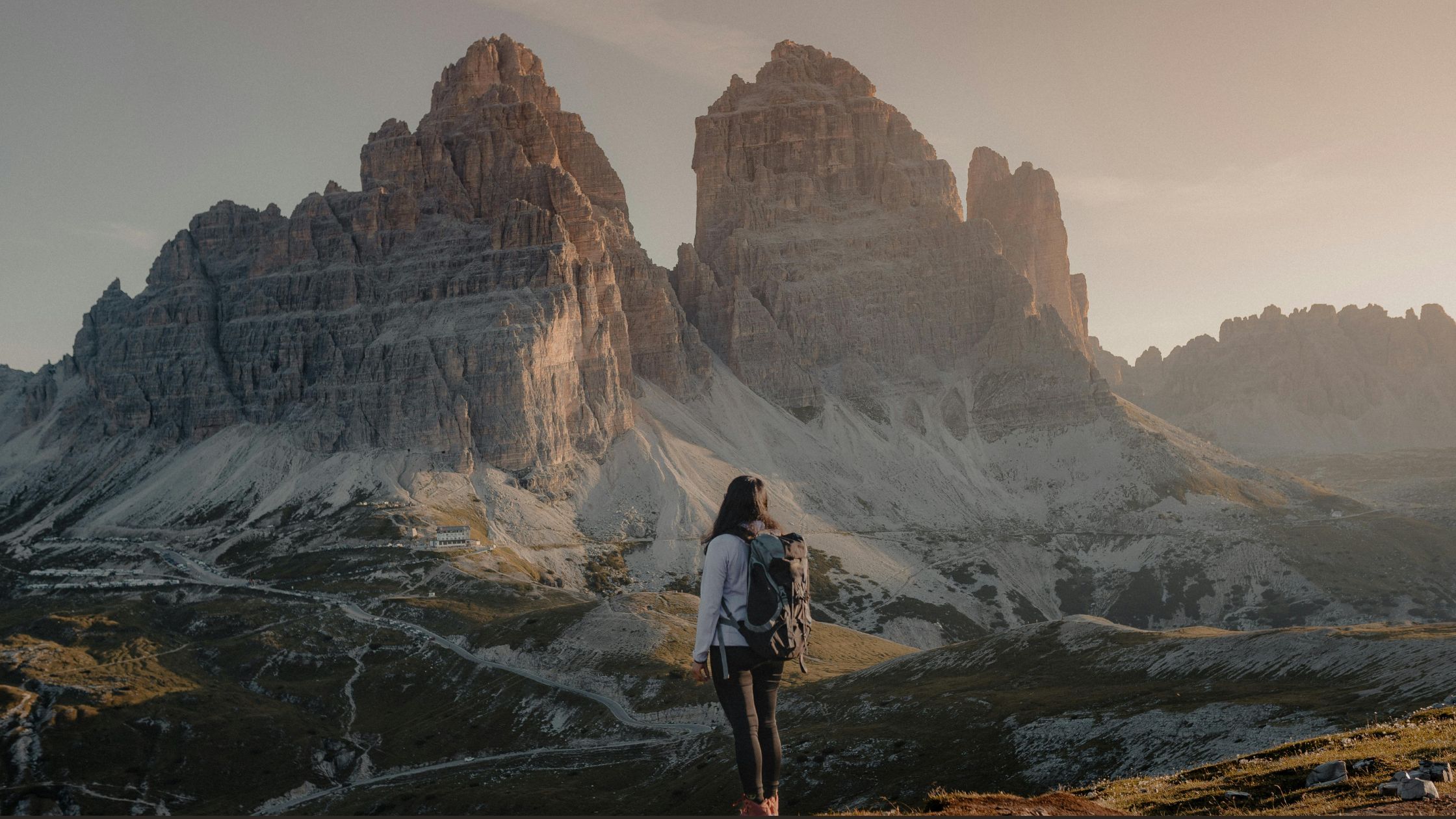

Introduction to Landscape Photography
Landscape photography is a captivating genre that focuses on the portrayal of natural environments and scenic vistas. It encompasses a wide array of settings, from breathtaking mountains and serene forests to vibrant beaches and urban landscapes. This form of photography seeks to capture the beauty of the world around us, evoking a sense of wonder and appreciation for nature’s artistry. As a result, it has gained immense popularity among both amateur and professional photographers alike.
The allure of landscape photography lies not only in the stunning visuals it can produce but also in the emotional connections it fosters. Photographers often aim to convey the essence of a location, allowing viewers to experience the same awe and tranquility that inspired the image. By capturing the interplay between light, color, and natural elements, landscape photographers transport individuals to distant places, igniting a longing to explore and connect with nature.
Landscape photography has the unique ability to showcase the diverse beauty found across our planet. Photographers may find themselves in a multitude of settings, each presenting its own challenges and rewards. For instance, mountainous landscapes may require careful planning to capture the perfect light during sunrise or sunset, while beach scenes might focus on the dynamic movement of waves. Urban environments, on the other hand, offer the opportunity to blend natural and man-made features, providing a distinct yet harmonious perspective.
Ultimately, landscape photography represents a profound expression of appreciation for the environment that surrounds us. It encourages individuals to pause and observe the details often overlooked in our daily lives, reminding us of the majesty and fragility of the world we inhabit. This genre serves not only as a creative outlet but also as a meaningful way to connect with nature and share its splendor with others.
Essential Equipment for Landscape Photography
Landscape photography demands specific equipment to effectively capture the breathtaking beauty of nature. The foundation of any photography setup typically begins with a high-quality camera. Most professional landscape photographers choose a digital single-lens reflex (DSLR) or a mirrorless camera due to their superior image quality and versatility. These cameras usually offer larger sensors that can enhance dynamic range and detail in wide, sweeping vistas. The ability to interchange lenses also allows photographers to adapt to different landscapes and lighting conditions.
When it comes to lenses, wide-angle lenses are particularly important for landscape shots, as they excel at capturing expansive scenes. A zoom lens can also be beneficial, providing flexibility to frame distant elements without sacrificing image quality. Additionally, a good quality polarizing filter is vital, as it can reduce glare from water surfaces and enhance the color saturation of the sky and foliage, making the landscape appear more vivid.
No landscape photography kit would be complete without a sturdy tripod. A tripod ensures stability and minimizes camera shake, particularly during long exposures or low-light situations, contributing to sharper images. It allows the photographer to carefully compose the shot and maintain a steady frame, especially when working with techniques such as long exposure photography to create smooth water effects or capture movement in the clouds.
Other accessories worth considering include lens cleaning kits, which help maintain image clarity by preventing dust and smudges, and remote shutter releases that can prevent camera shake when pressing the shutter button. In summary, selecting the right combination of equipment is crucial for achieving high-quality landscape photographs, as each component plays a significant role in the final outcome of the image.
Understanding Composition in Landscape Photography
Composition is a fundamental element in landscape photography, serving as the backbone of how we perceive and interpret a photograph. By mastering the principles of composition, photographers can create visually stunning images that effectively capture the beauty of nature. One of the most widely recognized guidelines is the rule of thirds. This technique involves dividing the image into nine equal sections with two vertical and two horizontal lines. By placing the key elements of the landscape along these lines or their intersections, photographers can create more dynamic and engaging compositions.
Another important aspect of composition in landscape photography is the use of leading lines. These lines guide the viewer’s eye through the image, drawing attention to the focal point. Natural elements such as rivers, paths, or fences can serve as excellent leading lines, enhancing the flow of the photograph and providing a sense of direction. Additionally, framing involves using elements within the scene to create a “frame” around the main subject. This technique not only adds depth but also focuses the viewer’s attention on the central point of interest.
Balance is also critical in achieving a harmonious composition. It refers to the way different elements within the frame are arranged. An unbalanced composition can lead to a sense of unease, whereas a well-balanced photograph feels stable and coherent. This balance can be achieved through symmetry or by carefully positioning objects within the landscape. Furthermore, the interplay between foreground, midground, and background is essential in creating depth in landscape images. Including interesting elements in the foreground draws the viewer into the scene, while the midground and background provide context and help convey the scale of the image. Attention to these compositional elements will significantly enhance the overall quality of landscape photographs.
Mastering Light in Landscape Photography
In the realm of landscape photography, light serves as one of the most pivotal elements in capturing the essence of a scene. The quality, direction, and color of light significantly influence how landscapes are perceived, ultimately impacting the final photograph. Understanding the magic of the golden hour and blue hour can elevate a photographer’s ability to create stunning compositions. The golden hour, occurring shortly after sunrise and before sunset, bathes landscapes in warm, soft light, enhancing colors and creating long shadows. The blue hour, occurring just before sunrise and after sunset, offers a cooler, moody palette that adds depth and intrigue to photographs.
Natural light transforms landscapes, revealing textures and colors that may otherwise go unnoticed. For instance, side lighting can accentuate the contours of hills and mountains, while backlighting can create a silhouette effect, resulting in dramatic images. Photographers should take note of how different weather conditions also affect the light; overcast skies can provide diffuse light that softens contrasts, making it ideal for capturing intricate details in foliage or water surfaces. Conversely, harsh midday sun can both challenge and inspire, urging photographers to seek creative solutions, such as using filters or incorporating shadows for dimension.
Techniques for shooting in various lighting conditions begin with observation and adaptability. It is essential to assess the light at different times of day and understand the shifting moods landscapes exhibit under varying conditions. Utilizing tools like histograms and light meters can aid in achieving optimal exposure levels. Moreover, experimenting with composition during different times of day can lead to discovering unique perspectives that highlight the interplay of light and landscape. Embracing these strategies will undoubtedly enhance a photographer’s skill in mastering light, leading to captivating works that fully embrace nature’s beauty.
Techniques for Capturing Stunning Landscapes
Landscape photography presents a unique opportunity to showcase nature’s stunning beauty, requiring a blend of technical skills and artistic vision. To achieve breathtaking results, photographers can utilize various techniques tailored for capturing landscapes effectively. One popular method is long exposure photography, which allows for the creation of smooth, ethereal effects in moving elements such as waterfalls or clouds. By using a neutral density filter, photographers can extend exposure times, resulting in a dreamy, soft appearance that highlights the fluidity of water or the motion of the sky.
Another effective technique is creating panoramic images. This can be achieved by capturing multiple overlapping shots of a scene and stitching them together in post-processing. Panoramic photographs can convey the grandeur of vast landscapes, allowing viewers to immerse themselves in the scene that a single frame may not capture. For best results, ensure that your camera remains at the same height and tilt while shooting to maintain consistency across images.
High Dynamic Range (HDR) photography is another invaluable tool in the landscape photographer’s arsenal. This technique involves capturing a series of images at varying exposure levels and combining them to create a single image that retains detail across shadows and highlights. HDR can bring out the richness of color and texture in a landscape, providing a more balanced representation of a scene’s luminosity.
Experimenting with different perspectives and viewpoints often leads to unique and compelling images. Changing elevation, or finding an unusual vantage point can reveal new dynamics in the landscape. Consider including foreground elements to add depth, or using leading lines to guide the viewer’s eye through the composition. By employing these techniques, photographers can enhance their landscape photography, capturing nature’s beauty in a more profound and evocative manner.
Post-Processing Tips for Landscape Photographs
Post-processing serves as a vital component of landscape photography, enabling photographers to refine and enhance their images to better reflect the stunning beauty of nature. Utilizing various editing software options can significantly enrich your photographs, transforming a good image into a captivating one. Popular choices for landscape photography editing include Adobe Lightroom, Photoshop, and Capture One, each offering a range of features tailored to accomplish different editing tasks.
When beginning your post-processing journey, it is essential to start with fundamental adjustments. Modifying exposure is often the first step, allowing you to brighten or darken your photograph according to your vision. Following exposure adjustments, tweaking contrast can bring depth to your landscape by highlighting the differences between light and dark areas. Saturation plays a critical role in making colors pop; however, it’s advisable to apply such adjustments carefully to maintain a natural look.
In addition to enhancing exposure and color, removing distractions from the scene can significantly improve the overall composition of your landscape photograph. Tools like the healing brush or clone stamp can eliminate unwanted elements, such as extraneous objects or blemishes, drawing focus to the main subject of your image.
While post-processing can dramatically enhance your landscape photographs, it is important to consider the ethics of editing. Striking a balance between enhancement and authenticity is crucial; ensuring that the edited image maintains a natural essence helps retain the original appeal of the landscape. Engaging in post-processing with integrity and awareness fosters a deeper appreciation for the beauty of nature captured in your photography.
Exploring Famous Landscape Photographers
Landscape photography has been profoundly shaped by various iconic photographers whose contributions have not only defined the genre but have also inspired countless artists. One of the most influential figures is Ansel Adams, known for not only his breathtaking black-and-white images of the American West but also for his innovative techniques in darkroom processing. His mastery of light and shadow, particularly in works like “Moonrise, Hernandez, New Mexico,” illustrates his ability to capture the essence of nature’s beauty. Adams pioneered the Zone System, a method that helps photographers achieve a balanced exposure, which remains instrumental in modern photography practices.
Another significant landscape photographer is Galen Rowell, who is celebrated for his vivid color photography and ability to capture the dynamic interplay of light within nature. Rowell’s work emphasizes the importance of being in the right place at the right time, which he exemplified in his iconic image “Rainbow over the Potala Palace.” His philosophy of adventure in photography encourages viewers to explore and experience landscapes firsthand, promoting a connection between the photographer and the subject.
Additionally, we cannot overlook the contributions of Edward Weston, whose approach to still life and landscapes emphasized form and texture. His work, particularly “Pepper No. 30,” transcends typical landscape photography by transforming everyday objects into art, showcasing the inherent beauty found within nature. Weston’s exploration of organic shapes invites a deeper appreciation for the visual narratives that landscapes can convey.
These photographers, with their unique styles and techniques, have laid the groundwork for future generations. By studying their work, aspiring landscape photographers can understand how to express their vision and develop their own signature styles. The legacies of Adams, Rowell, and Weston highlight the limitless creative possibilities within landscape photography.
Environmental Considerations in Landscape Photography
Landscape photography is a profound art form that allows photographers to communicate the beauty of nature. However, with this capability comes the responsibility to practice environmental stewardship. Photographers must be particularly aware of their impact on the landscapes they capture. Natural settings can be delicate, and even minor disruptions can lead to lasting harm. Understanding environmental considerations is crucial for both preserving these areas and ensuring the sustainable practice of landscape photography.
One of the key principles to embrace is the “Leave No Trace” ideology, which encourages individuals to minimize their ecological footprint while enjoying the outdoors. This includes not only refraining from leaving trash behind but also avoiding damaging plants, disturbing wildlife, or altering natural features for the sake of a photograph. Photographers are often drawn to remote or pristine locations; therefore, it is vital to tread lightly and respect these fragile ecosystems. Adopting measures such as sticking to established trails, using designated viewing areas, and observing wildlife from a distance can help mitigate the risk of environmental degradation.
Furthermore, photographers have the unique opportunity to advocate for conservation through their images. By highlighting the beauty and vulnerability of various landscapes, they can raise awareness about environmental issues facing these areas, such as climate change, deforestation, and pollution. Sharing compelling imagery on social media or exhibitions can ignite passion and inspire action among viewers, fostering a collective commitment to protect natural landscapes. Therefore, it is not only important for photographers to be mindful of their immediate impact but also to leverage their art as a tool for conservation and environmental education.
In conclusion, landscape photographers must prioritize environmental considerations to ensure that the beautiful places they capture remain intact for future generations. By incorporating ethical practices and advocating for conservation, photographers can contribute to the preservation and appreciation of the natural world.
Getting Started: Tips for Beginners
Embarking on a journey in landscape photography can be both an exhilarating and daunting experience for beginners. The key to success lies in finding inspiration and embracing the learning process. One of the first steps is to explore local parks, nature trails, or scenic viewpoints to spark creativity. Observation of varying landscapes during different times of the day can also offer unique photographic opportunities, thus enhancing your skills.
In addition to seeking inspiration, it’s essential for aspiring photographers to practice different techniques regularly. Familiarizing oneself with the camera’s settings such as aperture, shutter speed, and ISO will allow for better control over the final image. The rule of thirds is a fundamental composition technique worth mastering, as it can make photographs more dynamic and visually appealing. Experimentation with different angles and perspectives can lead to discovering unique and breathtaking views that may not initially seem apparent.
Joining photography communities, whether online or in person, can provide valuable feedback and motivation for beginners. Platforms such as social media groups, photography forums, or local clubs can be excellent resources for sharing experiences, exchanging tips, and showcasing work. Engaging with more experienced photographers can help newcomers understand technical aspects and receive constructive criticism, which is vital for growth.
Lastly, it’s important to remember that landscape photography is not just about capturing breathtaking scenery but also enjoying the process of discovery. Every moment spent outdoors offers a chance to learn and connect with nature. Thus, beginners should feel encouraged to embrace their unique styles and perspectives, allowing their creativity to flourish. Ultimately, each photograph taken is not solely an image but a memory of a moment spent exploring the beauty of the great outdoors.
RELATED POSTS
View all





